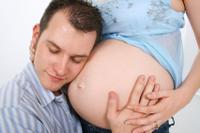For most women, labour and birth occur about 38 to 42 weeks into the pregnancy. While you may feel excited to meet your new baby, it is also very natural to feel nervous about the birth experience, especially if it is your first time.

This class also includes:
Section 2 – Packing for birth centre
Your birth centre stay may only be for 1 or 2 days. Bring your own comfortable clothes and supplies. Even your baby can start life in his or her own clothes!
Section 3 – How does my body get ready for labour?
Although every woman experiences labour differently, there are some general signs that labour is beginning. You may have some of these signs “on and off” for several days before labour starts. This is called ‘pre-labour’. Some signs you may not notice, and others may be more obvious
Section 4 – Your body knows what to do
Your body knows what to do to bring your baby to birth! It has been growing your baby inside you since conception, and at the same time, it has been doing all the other things you need it to do in order for you to be healthy and function properly. There are so many processes like digestion, breathing, keeping your body the right temperature, just to name a few, which are at work all day every day and you don’t even need to think about it! Your body has been feeding and protecting your baby all this time, and …
Section 5 – Is it really labour?
In late pregnancy, some women feel strong contractions as their body “warms up” for birth. These can come and go quite regularly for several hours or even days, and then can even go away. It can be difficult to know when it’s really time for baby!
Here are a couple of ways to tell the difference between pre-labour and “true” labour.
Pre-labour contractions:
- May be long (a minute or more) but do not get stronger
- Are usually irregular
- Walking or lying down or changing positions might make them go away.
True Labour contractions:
- Get longer, stronger and closer together …
Section 6 – What are the stages of labour and birth?
There are three stages to the labour and birth process. In the First Stage of labour, your cervix thins and opens so that the baby can then move through the birth canal (vagina). Second Stage is the pushing stage, and ends with the birth of your baby. The Third Stage is the delivery of the placenta.
A woman’s first labour often lasts 10 to 14 hours. However this is just an average. In reality, labours can vary from a few hours to 36 hours or more. In future pregnancies, labours are usually shorter. The length of time you spend …
Section 7 – What does my support person do?
Each labour experience is unique. Knowledge, relaxation, a supportive partner and a positive attitude can help you manage the discomfort of labour and increase your sense of control.
For many women, the most valuable tool to help with the process of labour is their partner and/or labour support person.
- Your support person can help you find comfortable positions, breathe with you to keep you focused, rub your back or do stroke massage to help you relax.
- Many partners are experiencing childbirth for the first time too, so we recommend you prepare together. Attending childbirth education classes, reading books and …